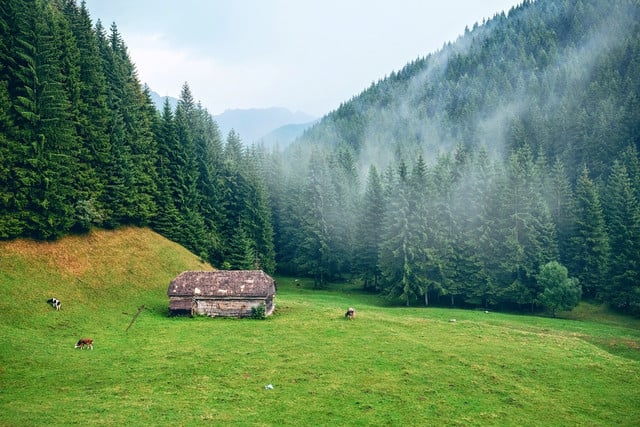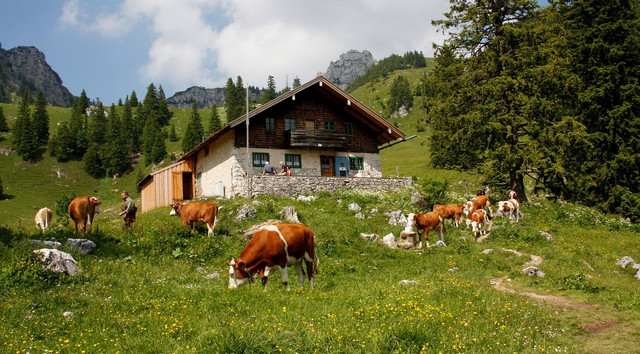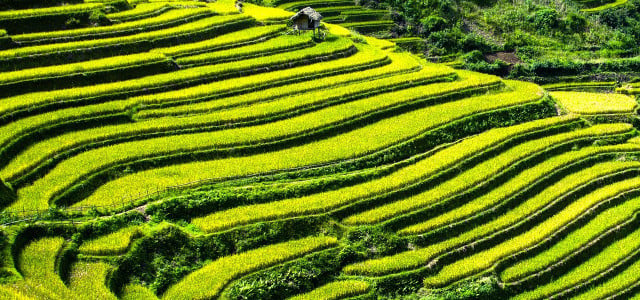Silvopasture incorporates forests into farming, with each one complementing the other. Haven't heard of this concept before? Discover the drawbacks and benefits.
Silvopasture, otherwise known as “forest farming,” is when livestock and trees are integrated together rather than separately. This can be done with several types of animals, such as cows, sheep, chickens, deer, and goats, in woodland areas or tree plantations. The animals are then free to roam as they normally would in farmer’s fields. While they are allowed to roam free, there is still a degree of management that remains within silvopasture to ensure both animals, and the woodland see benefits.
According to a 2022 report in the Journal of Agriculture, Ecosystems & The Environment, the use of the “forest farming” technique is actually increasing in the US — and for a good reason. Below, we’ll break down some of the benefits and drawbacks of this fascinating agricultural technique.
Benefits of Silvopasture

(Foto: CC0 / Pixabay / catalinserban)
Surprisingly, the technique of silvopasture not only benefits the land, it benefits the animals and farmers involved too. Let’s take a look at how:
- It’s sustainable: The silvopasture process has been shown to be more sustainable when compared to current, more traditional systems. This is because the trees help to absorb more carbon dioxide, thus lowering carbon emissions.
- Reduced heat stress: The trees provide extra shade for livestock to protect them from the heat during the summer months.
- Added protection: Forage — a longer type of grass eaten by livestock — protects the soil from environmental erosion from the wind and rain.
- Maximized yield: Farmers can directly profit from trees as they can harvest produce from them, whether it be food or wood products. The trees and forage can also act as food for livestock, helping farmers to save money. In turn, this also helps to provide the animals with a more balanced diet. This increases farmers’ yields, and consequently, their profits.
- Increased wildlife diversity: Silvopasture provides a safe habitat for wildlife and can encourage new wildlife to thrive in the area.
- Soil improvements: Trees can help to enrich the soil and organic matter. The fallen leaves can create mulch (organic matter), which in turn helps soil in a number of ways, including improving soil nutrients and organic matter. Mulch also helps to protect tree roots.
- Reduced agrochemicals: As mulch prevents weeds from growing, it can therefore help to prevent the use of agrochemicals to get rid of them.
For these reasons, silvopasture is much kinder to the planet — especially considering that it emits lower emissions when compared to traditional farming methods. However, while farmers, animals, and the environment all benefit from this agricultural farming technique, it still comes with its downsides.
Drawbacks of Silvopasture



(Foto: CC0 / Pixabay / holzijue)
Now we’ll break down some of the drawbacks of “forest farming.”
- Startup costs: The initial funding needed to set up such a system can be quite costly, which may be off-putting for many farmers.
- Land requirements: Silvopasture requires a lot of land area which some farmers may not have.
- Labor intensive: Farming using this technique requires much labor compared to traditional methods in terms of upkeep and the management system required.
- Potential damage: Livestock may potentially damage trees.
- Plant competition: All the plants on the farmer’s site may fight for light and nutrients, especially if close together.
Despite there being drawbacks, silvopasture is more beneficial to the planet when compared to traditional farming methods. This mostly boils down to the level of emissions produced by each method. Other farming methods, such as vertical farming have also gained traction around the globe in recent years. However, they have yet to be implemented on a larger scale.
Read more:
- Seaweed Farming: Risks & Potential of the Miracle Crop
- What Is Sustainable Agriculture? 5 Examples and Its Benefits
- Slash-and-Burn Agriculture: Definition, Risks, and More
Do you like this post?







